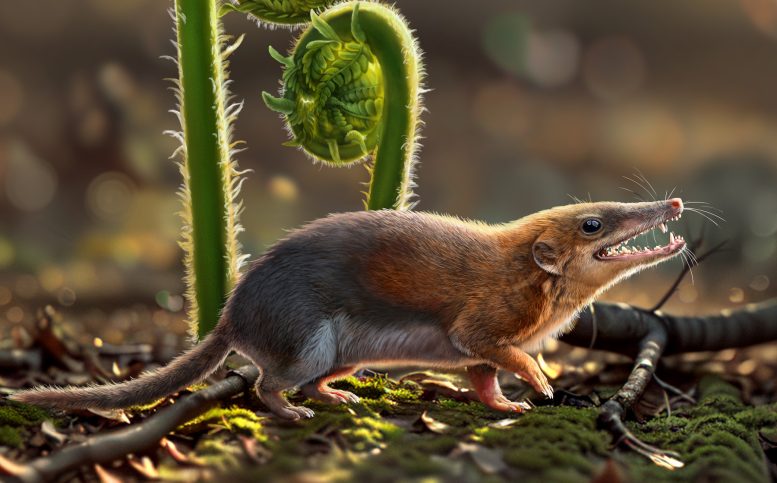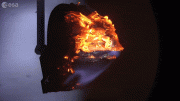
Recent paleontological research has unveiled crucial insights into the evolution of hearing in early mammals, marking a significant advancement in our understanding of mammalian ancestry. By analyzing fossils from the Jurassic Period, scientists have traced the evolutionary shift of bones from the jaw joint to the middle ear, offering a clearer picture of the development of specialized hearing functions and challenging previous theories about the mammalian middle ear’s evolution. The image above depicts a reconstruction of the newly described species Dianoconodon youngi. Credit: Chuang Zhao
An international team of paleontologists has uncovered important fossils that provide crucial insights into how early mammals transitioned from having jaw joint bones to middle ear bones during their evolution.
The findings published today in the prestigious journal Nature provide a clearer insight into the evolution of hearing in mammaliaforms.
The fossils, from the Jurassic Period, are of two different species: a novel morganucodontan-like species and a pseudotribosphenic shuotheriid species. The specimens show noticeable physical characteristics, suggesting a gradual change in the jaw joint’s function towards specializing in hearing.
“The significance of this discovery is that both species have mandibular middle ears (MdME), and the morganucodontan-like species have new postdentary bone structures,” said author Professor Patricia Vickers-Rich from the Monash University School of Earth, Atmosphere and Environment.
“This species is losing the load-bearing function of its articular-quadrate joint, whereas the shuotheriid species is showing characteristics suited for purely auditory function,” she said.
Evolutionary Transition in Mammalian Hearing
The fossils offer important evidence of the transitional phases in the evolution of the mammalian middle ear. A progressive decline in the load-bearing capacity of the main jaw joint is leading to the separation of postdentary bones from the dentary.
The findings revise prior ideas of the original state of the mammalian middle ear. The research enhances the understanding of mammaliaform development by resolving questions related to middle ear evolution in close mammal relatives.
Significance of Incremental Adaptations
“Studying transitional stages in evolutionary history is crucial,” said Professor Vickers-Rich.
“The fossils show incremental modifications that demonstrate the complex process of adaptation that resulted in the advanced hearing systems found in modern animals.”
The results also provide insight into how tissues such as the ossified Meckel’s cartilage helped in the shift from jaw movement to hearing ability.
Researchers can track the steady evolution of the middle ear ossicles by studying traits like the medial displacement of the quadrate in reference to the articular.
Co-author Dr. Thomas Rich of Museums Victoria Research Institute said, “Newly recognized well-preserved fossils from the Jurassic of China significantly clarify how one of the most remarkable transitions in the history of the vertebrates occurred; namely, the transformation of many of the multiple bones in the lower jaws of reptiles became tiny bones in the middle ears of mammals.”
The research team highlights that these findings are important advancements in our comprehension of mammalian evolution. Researchers aim to acquire greater insights into the intricate processes that influenced the development of hearing in early animals when more fossil evidence is uncovered through ongoing fieldwork and investigative research.








This is old, recycled news we’ve known since the 1980s. I included this information in a popular evolution book published by Wm Morrow in 1991.